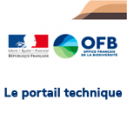Mission Lavia: discovering the bats of West Africa
Six young French people committed to biodiversity set off to study bats for three months in West Africa. The Lavia Mission is a traveling expedition whose main objective is to acquire scientific data on chiropterans.
On May 8, 2024, six French people set off on an expedition to Morocco, Mauritania, Senegal and Guinea to acquire scientific data on chiropterans in these West African countries. The mission's name is a nod to an emblematic species of bat found in this part of the world: the Lavia frons.
The members of the Lavia mission also aim to mobilize the stakeholders and populations of these African countries, through the exchange of knowledge between [with] young French-speaking people. Several stages of this itinerant expedition are in the heart of protected areas, such as the Souss-Massa National Park in Morocco, the Diawling National Park in Mauritania, the Boundou Community Nature Reserve in Senegal and the Kounounkan classified forest in Guinea.
On their return, scheduled for mid-August, they intend to widely disseminate what they have learned during this human and scientific adventure. A documentary film and an artistic travel diary will be produced to document the diversity of bat species, as well as the naturalistic and human experience shared across the countries visited. A scientific report outlining the results of the mission will be written and widely distributed. Data collected during the mission will be made available to global and local databases.
A committed and unifying mission
The Lavia mission is made up of students from AgroParisTech and the University of Angers, film-makers from the Institut francophone de formation au cinéma animalier de Ménigoute, and a student from the Montpellier Fine Arts School. It echoes Nicolas Chenaval and Vanessa Lelant's 2010 expedition (Chenaval & Lelant, 2011), based on chiropteran inventories in Mauritania, Mali and Senegal. This provided new data with the capture of over 400 bats, 34 species (some very rare: 10th capture of Myopterus daubentonii on the African continent) and the discovery of 25 tree or cave roosts, some of which contained several hundred individuals (over 1,000 Taphozous nudiventris at Missiriko).
Nocturnal captures at the identified sites will be necessary for the bat species inventory. During the day, the team will work with local people in search of tree, cave and anthropized habitat roosts. Exchanges with local people are an integral part of the mission, and their knowledge of the field and species will consolidate the data collected. Finally, the acoustic survey, carried out at night, will enable the team to inventory species that are shy or more difficult to capture.
This mission is supported by several partners: the French Biodiversity Agency (OFB), Fondation Biotope, Région Nouvelle-Aquitaine, Fondation AgroParisTech, Zeiss, Global Youth Biodiversity Network France and La caisse à Clous.
The French Biodiversity Agency (OFB) is supporting the Lavia mission with 7,000 euros. Several previously unpublished items from the expedition will be published on OFB's social networks.




